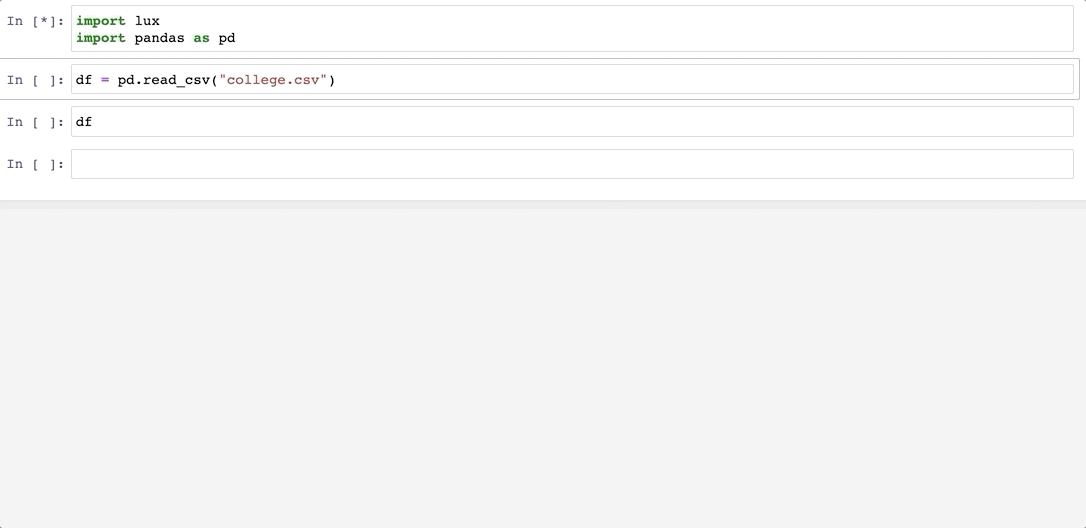Package Exports
- luxwidget
This package does not declare an exports field, so the exports above have been automatically detected and optimized by JSPM instead. If any package subpath is missing, it is recommended to post an issue to the original package (luxwidget) to support the "exports" field. If that is not possible, create a JSPM override to customize the exports field for this package.
Readme
Lux is a library designed to make data science easier and facilitate fast experimentation with data. You can learn more about Lux by referring to the core Lux API in Python. This is the Jupyter widget frontend for Lux, written in Typescript and React.
Here is an example of the Lux widget in action.

You can find the full demo example in this live notebook.
Installation
To use Lux, you should also have the lux-api also installed. The Lux Jupyter widget can be installed through PyPI:
pip install lux-widgetTo use Lux in a Jupyter notebook, activate the notebook extension:
jupyter nbextension install --py luxwidget
jupyter nbextension enable --py luxwidgetIf the installation happens correctly, you should see two - Validating: OK after executing the two lines above.
If you encounter issues with the installation, please refer to this page to troubleshoot the installation. Follow these instructions to set up Lux for development purposes.
To use Lux in Jupyter Lab, activate the lab extension:
jupyter labextension install @jupyter-widgets/jupyterlab-manager
jupyter labextension install luxwidgetIf you encounter issues with the installation, please refer to this page to troubleshoot the installation. Follow these instructions to set up Lux for development purposes.
Documentation and Support
For detailed reference, please refer to the documentation page. Please report any bugs, issues, or requests through Github Issues or post on the #help channel in the Lux Slack org.
Lux has only been tested with Jupyter notebook and Chrome - there have been issues with other browsers and we advise using Chrome.


